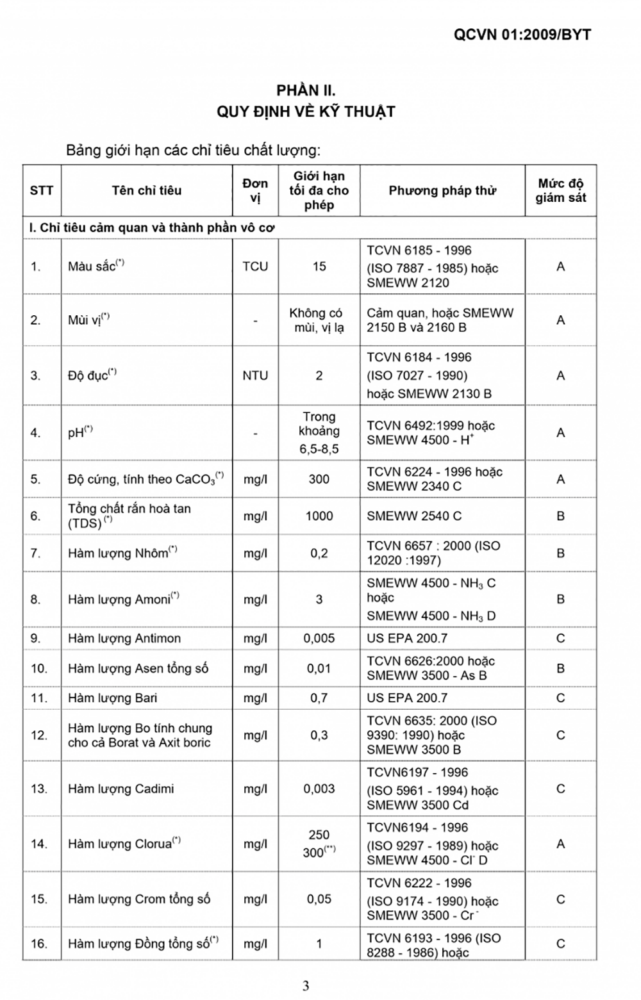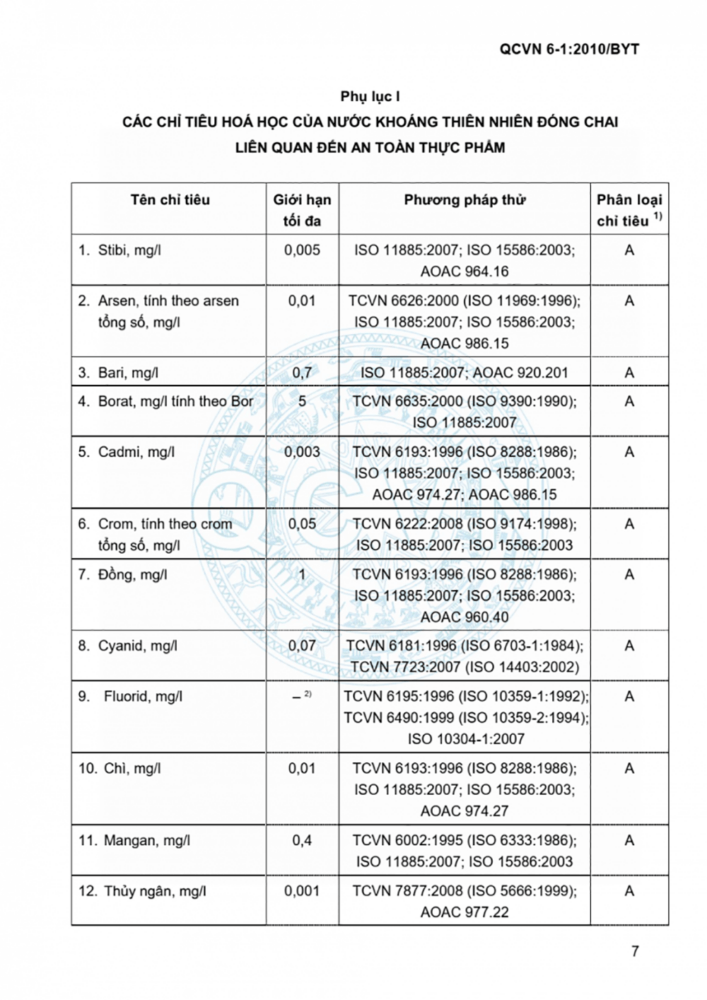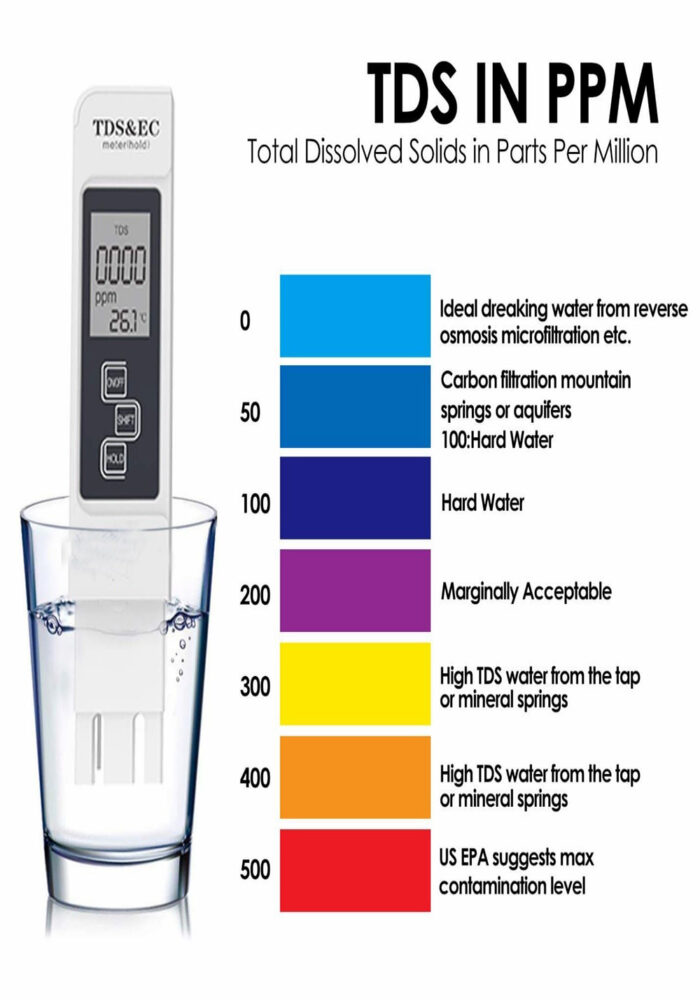TDS index is one of the criteria to evaluate the quality and safety of the water source that you are using. So what is TDS? What is domestic TDS? How to check whether this index in the water is up to the standard or not? Please follow the article below to better understand what TDS is as well as be able to self-assess the quality of your family’s water source.
What is the TDS indicator?
To understand what TDS is, you need to understand the meaning of the acronym “TDS”. TDS stands for Total Dissolved Solid – total dissolved solids, which are made up of inorganic salts as well as small amounts of organic matter. Common inorganic salts that can be found in water include: the cations are calcium, magnesium, potassium, sodium and the anions carbonate, bicarbonate, chloride, and sulfate.
Specifically, the definition of TDS is as follows:
- The TDS of water is the total amount of charged ions, including minerals or metals dissolved in a unit volume of water (mg/L), which is one part per million ppm (1 mg/L = 1 ppm).
Ppm stands for “Parts Per Million” aka parts per million. Ppm is the weight ratio of any ion to water.
- What is TDS content? The TDS content is related to the purity of the water and the quality of the water purification system. It is defined as a substance that affects human health or affects everything that is consumed or absorbed.
Causes of high TDS in the water
After understanding what TDS is, you need to know what causes a high TDS in the water. High TDS levels are caused by the presence of potassium, chloride, and sodium. These ions may or may not be harmful to health in the short term but toxic ions (lead arsenic, cadmium, nitrate) can also be dissolved in water.
By measuring the TDS level in your water, you will be able to tell if the water you are drinking is pure or impure. According to the recommendations of experts, the maximum suitable TDS level is 500 mg/L for drinking water and should not exceed 1000 mg/L for domestic water.
Vietnam Clean Water Standards (QCVN)
In 2009, the Ministry of Health announced the QCVN 01:2009/BYT standard to evaluate the cleanliness of water in terms of color, taste, pH, etc.

In 2010, the Ministry of Health issued QCVN 6-1:2010/BYT with 12 chemical indicators of bottled natural mineral water related to food safety.

What happens when the TDS in the water is high?
High concentrations of dissolved solids do not generally present a health hazard. In fact, many people still buy mineral water with a high content of natural dissolved solids, commonly known as spring water or mineral water such as Vinh Hao mineral water, Lavie mineral water, etc.
The United States Environmental Protection Agency (EPA), which is responsible for drinking water regulations in the United States, considers TDS as a sub-standard.
However, very low concentrations of TDS in water give the water a bland taste, which is undesirable for many people. Increased concentrations of dissolved solids can also cause technical effects. Dissolved solids can form hard water, leaving deposits and film scum on fixtures, inside hot water pipes and boilers. Soaps and detergents do not foam as much with hard water as they do with soft water. In addition, high levels of dissolved solids can stain furniture, corrode pipes, and have a metallic taste.

How to deal with high TDS in water?
Water treatment facilities can use reverse osmosis RO to remove water-soluble solids that are responsible for increasing TDS levels. Reverse osmosis removes virtually all dissolved substances, including many harmful minerals, such as salt and lead. It also removes healthy minerals, such as calcium and magnesium, and ideally reverse osmosis water should be filtered through an additional magnesium and calcium supply to add minerals to the water.
The mineral layer also increases the pH and reduces the corrosive potential of the water. For more information on reverse osmosis you should see the fact sheet on ultrafiltration, nanofiltration and reverse osmosis. To find out how to treat water contaminated with high TDS, please contact Song Phung Environmental Company for more detailed advice!
Why should TDS and pH be monitored regularly?
Monitoring TDS levels and pH of drinking water is essential. When the water source has a high TDS or a low pH, it is likely that there are other harmful contaminants in the water. Both TDS and pH are easy to measure, and if something happens to the water like contamination, chances are good that both the TDS and pH levels will change. Therefore, the monitoring of changes aims to detect early signs of water abnormalities. For these reasons, it is important to monitor TDS and pH levels. If they change, you can take immediate action.
Above, Song Phung Environmental Company has just answered specifically for you the question “What is TDS?”. If the water you are using does not have TDS and pH information, please send a sample of water to Song Phung Environmental Company with a capacity of at least 500ml. We will test for you free of charge as soon as we receive the water sample.
As one of the major water equipment suppliers, Song Phung has a full range of products to meet the needs of water treatment in industries, processing, manufacturing or families. Customers can easily buy Song Phung’s products at: https://thietbinganhnuoc.com/en/product. In addition, Song Phung also has a sales policy, the most optimal product warranty to ensure the interests of customers.
Learn more: What is the most popular pressure gauge today?
Contact hotline: 0913.90.72.74 to order in bulk, the most preferential price!
Follow Fanpage: https://www.facebook.com/SongPhungthietbinganhnuoc/ to update new products.
Translator: Duong Nguyen Hoang Khang


